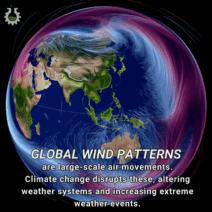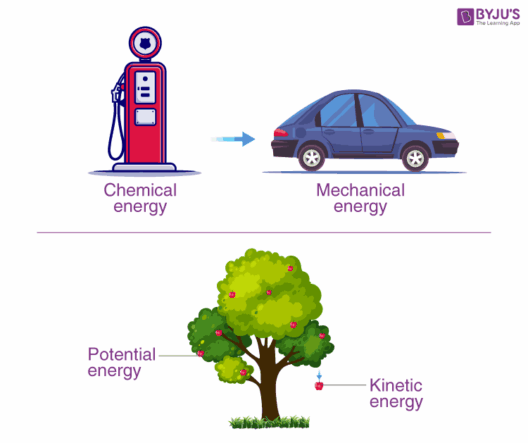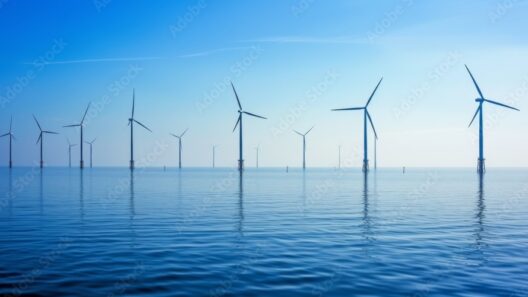As the effects of climate change ripple through various ecosystems, the consequences for species that rely heavily on specific habitats become increasingly dire. Among these species, the beluga whale and the caribou stand out, not only because of their unique biological characteristics but also due to their critical roles within their respective ecosystems. The hidden impacts of global warming on these magnificent creatures raise pressing concerns regarding biodiversity and ecosystem stability.
Beluga whales, often called “canaries of the sea” for their vocalizations and social behaviors, inhabit the frigid waters of the Arctic and sub-Arctic regions. These marine mammals are adept at navigating the icy terrains of their environment. However, with the progressive warming of the planet, significant alterations in their habitat are manifesting. The melting of sea ice, a direct result of rising global temperatures, has profound implications for beluga whales. Ice serves as a critical platform for hunting, resting, and breeding. The decline in ice cover not only disrupts these activities but also exposes belugas to increased predation and competition for food resources.
The food web that supports beluga populations is also under siege. With the warming of ocean waters, changes in fish migrations and abundances are occurring, leading to a cascading effect that threatens the beluga’s main sources of sustenance. Fish species like herring and Arctic cod are either declining or relocating to cooler waters. This shift imposes a reliance on alternative prey, which may not provide the nutritional value required for sustaining healthy beluga populations. The resultant dietary deficiencies can hinder reproduction rates and overall population health.
Furthermore, the alteration of water temperatures influences the distribution of toxins in the marine environment. Pollutants accumulated in the ice, such as heavy metals and persistent organic pollutants, are released into the water as the ice melts. This phenomenon exposes beluga whales to increasingly toxic environments, potentially leading to long-term health consequences and decreased reproductive success.
Inland, the plight of caribou offers a parallel narrative of ecological disturbance spurred by climate change. Caribou are iconic inhabitants of the tundra and boreal forests, renowned for their immense migratory patterns that stretch hundreds of miles. These migrations synchronize with seasonal changes that dictate availability of food resources. Warmer temperatures are altering these seasonal cues, leading to mismatched timings between calving and the peak availability of nutritious forage. As a result, calves may encounter inadequate nutrition during their critical early developmental stages, impacting their survival rates.
Moreover, the permafrost—frozen ground that provides essential stability to caribou habitats—is increasingly thawing due to rising temperatures. This thawing not only destabilizes the ground, impacting grazing patterns, but also exposes ancient carbon deposits. The release of this carbon into the atmosphere exacerbates the climate crisis, creating a feedback loop that further threatens caribou populations and their habitat integrity.
The interactions between caribou and their predators, such as wolves, are also experiencing shifts. As caribou herd sizes decline due to changing environmental conditions, predators may alter their hunting strategies. The resultant pressure on caribou populations may lead to increased mortality rates, further compounding the challenges they face.
In examining these phenomena, it becomes clear that the interconnectedness of climate change, food security, habitat stability, and predation dynamics is profound. Both beluga whales and caribou serve as poignant reminders of the fragility of ecosystems that rely on specific temperature ranges and habitat structures. The plight of these species underscores the necessity for comprehensive climate action and targeted conservation strategies.
Addressing the challenges that climate change imposes on beluga whales and caribou requires global collaboration. Conservation efforts must focus on habitat protection, reducing greenhouse gas emissions, and mitigating further warming. Such initiatives can include the establishment of marine protected areas that safeguard critical hunting and breeding grounds for belugas, as well as preserving migratory routes and calving grounds for caribou. Additionally, addressing pollution in the Arctic and sub-Arctic regions by implementing stringent regulations on industrial waste can reduce toxic exposure for both species.
Public awareness is paramount. Engaging communities in conservation efforts empowers individuals to contribute to a larger movement aimed at combatting climate change. Understanding the intricate web of life that sustains beluga whales and caribou fosters a sense of responsibility and stewardship, ultimately influencing policy and protective measures.
Amid these challenges, there exists hope. Scientists and conservationists are developing adaptive strategies to assist both beluga populations and caribou herds. By investing in research and tracking systems, we can better understand the changing dynamics of their ecosystems and respond accordingly. Preservation of genetic diversity, fostering resilience within populations, and enhancing habitat connectivity are vital strategies to mitigate the impacts of climate change.
Beluga whales and caribou not only enrich the tapestry of the natural world but also serve as indicators of climatic health. Their struggles underline the urgency of addressing climate change and its pervasive effects. Protecting these species is not merely an act of conservation; it is an ethical imperative that transcends ecological boundaries. The journey towards a sustainable future hinges upon collective action, informed choices, and a commitment to safeguarding the intricate relationships that bind us all within the biosphere.





